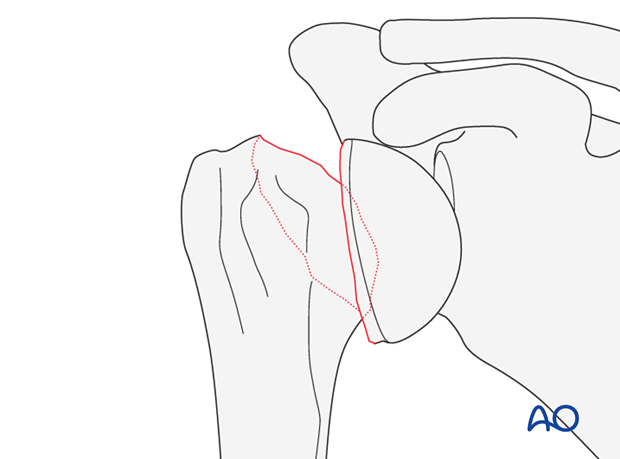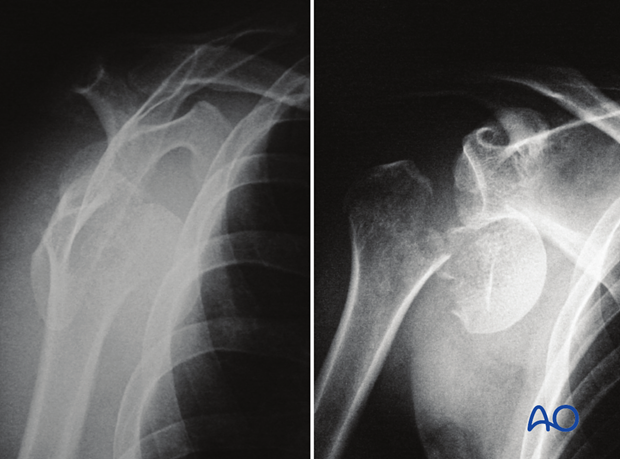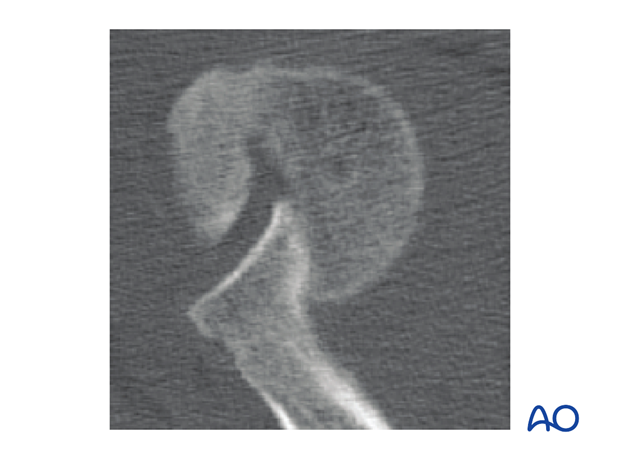Isolated anatomical neck, dislocation
In these fractures the tuberosities are not involved. They require reduction as soon as possible. Open reduction is often necessary.
These fractures involve a glenohumeral dislocation (head fragment displaced from glenoid fossa). An anterior dislocation is much more common than posterior. The risk of avascular necrosis is significantly increased by the combination of a dislocation with a fracture that devascularizes a small humeral head fragment or is comminuted. Although these fractures do not necessarily pass through the articular surface, they are termed “articular fractures”; the articular surface is detached from both tuberosities and/or fractured itself.


Humeral head impaction
Impaction of the humeral head is a feature of some of these fractures. Impaction injuries should be identified and respected. Treatment protocols for these rare injuries remain to be developed.














